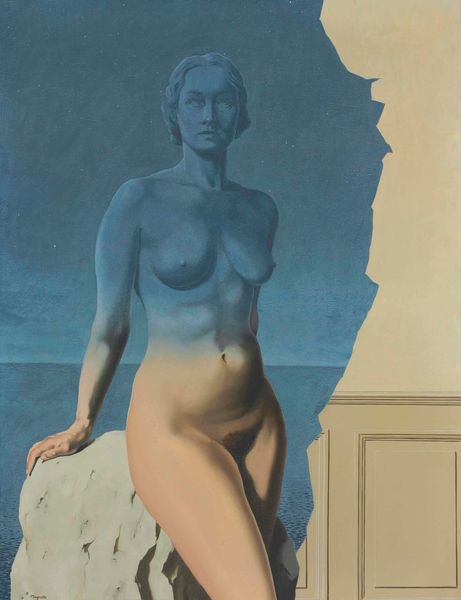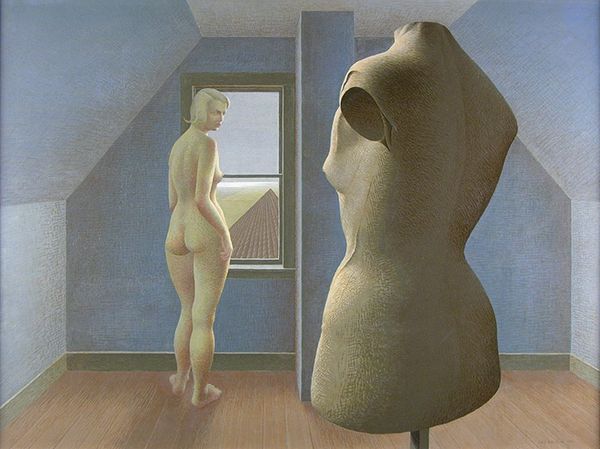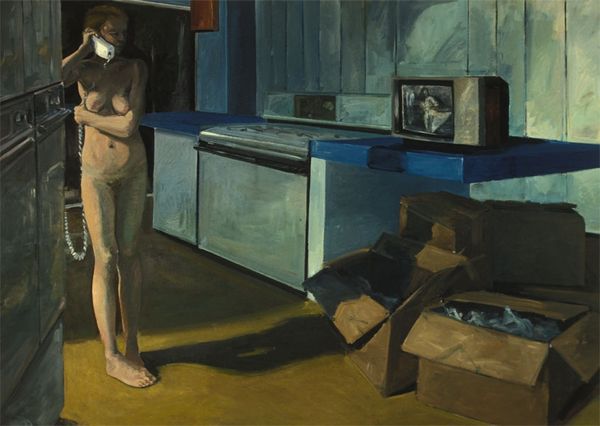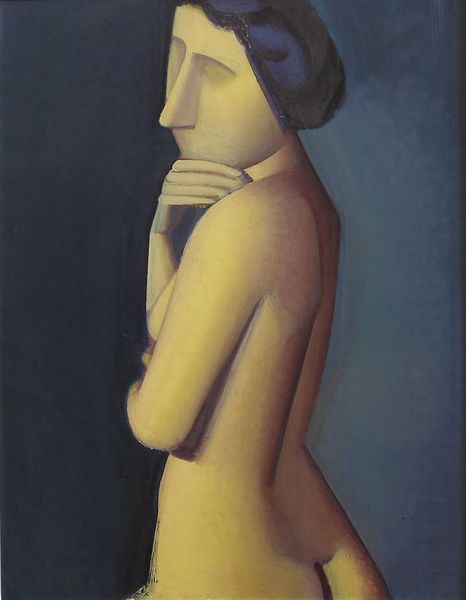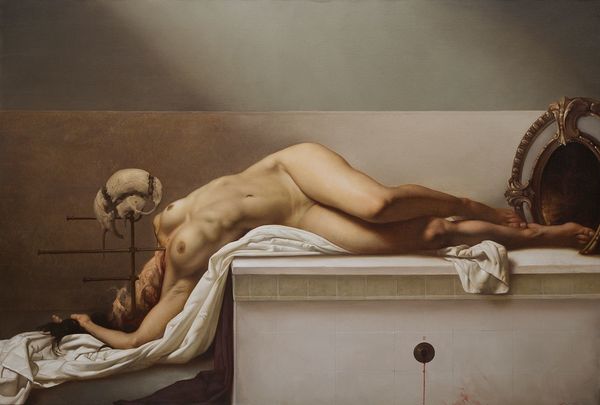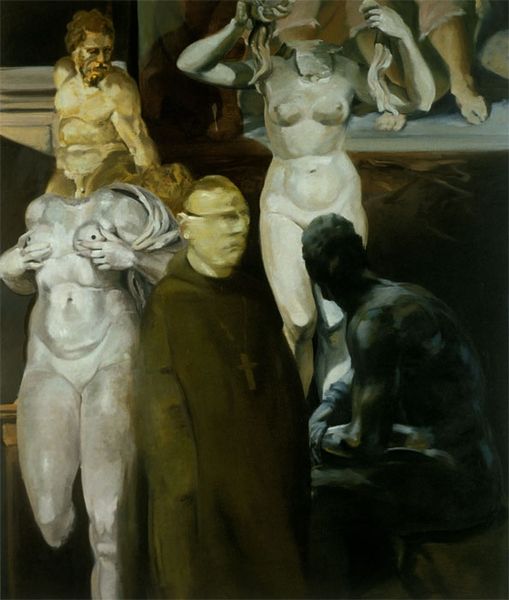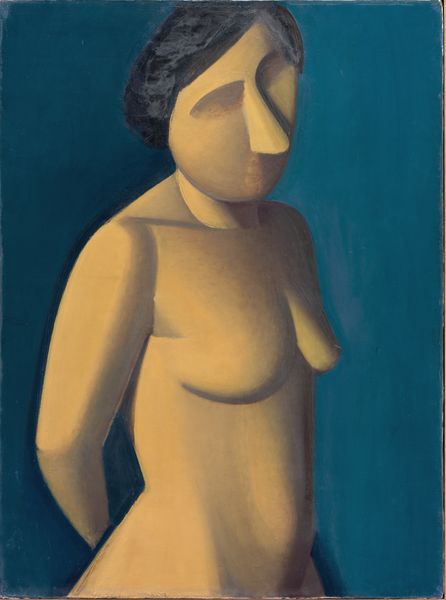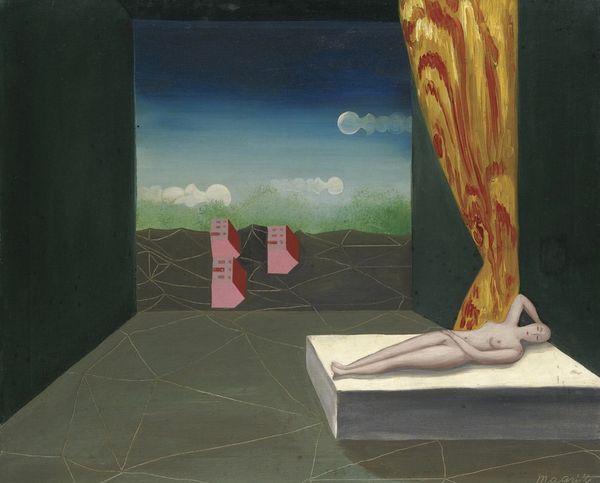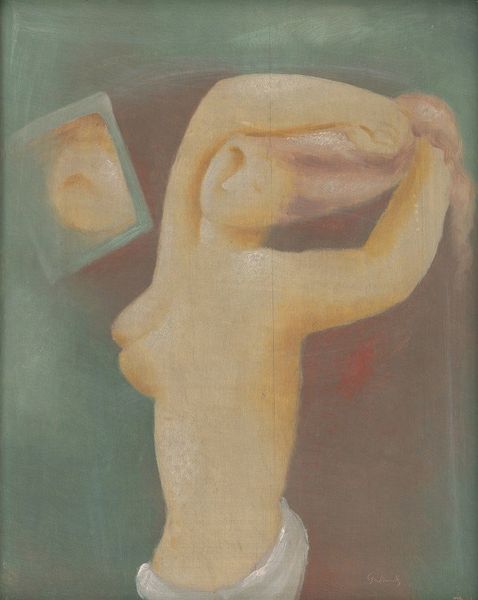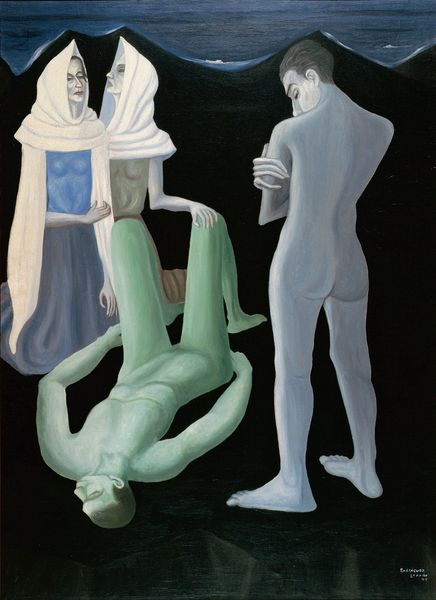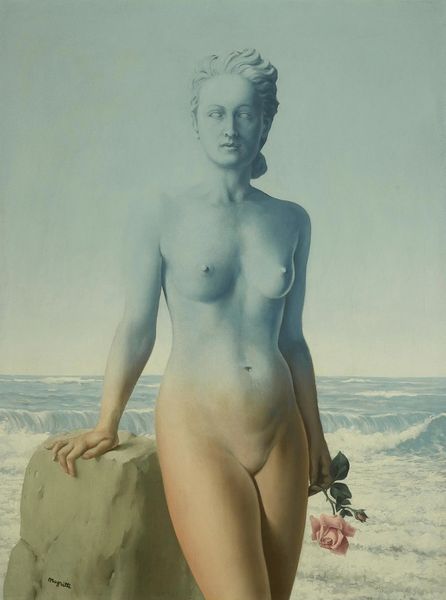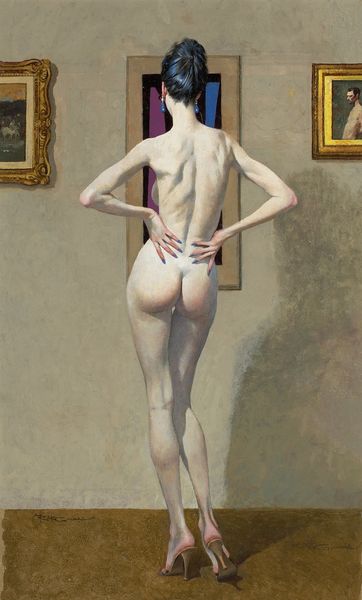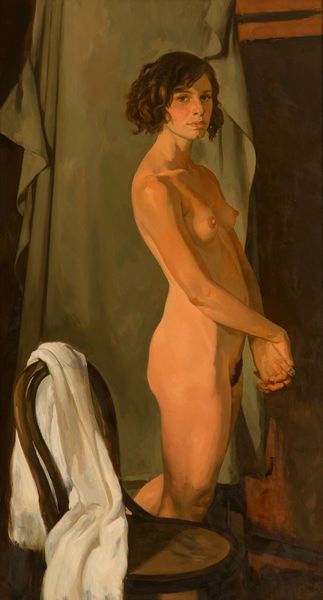
painting, oil-paint
#
painting
#
oil-paint
#
sculpture
#
landscape
#
nude
#
surrealism
#
realism
Copyright: Modern Artists: Artvee
Curator: Good morning! Today, we find ourselves before René Magritte’s disquieting "Le palais de la courtisane", painted circa 1929-1930 using oil paint. I must say, the way the canvas is divided creates quite a striking first impression. What comes to mind for you? Editor: Unease. That's the immediate feeling, that something's just... off. The stark division, the cool formality of the architecture versus the warm, almost fleshy, organic form. It’s confrontational. The body is cropped abruptly, presented almost like an object, but very viscerally so. Curator: Precisely. Magritte was masterful in juxtaposing disparate elements to provoke precisely that sense of disquiet and re-evaluation. A classical architectural space, opening to a romantic, if somewhat gloomy, landscape... yet visually barricaded by this imposing, pale nude torso. What is the iconographic language that you're noticing in how he deploys the body here? Editor: Well, classically, the nude body often represents idealized beauty, vulnerability, the unadorned truth, if you will. Here, it’s as though Magritte has turned that expectation on its head. This isn’t an ideal; it's cropped, almost brutally presented. We see its volume and subtle tone. It becomes less about romantic ideals, more about... presence. A monumental obstacle, almost a wall in itself, erected between the interior, the domestic or social sphere, and the natural world beyond. And "palais de la courtisane" could reference the sensuous ideals of classical beauty in relation to monetary and aesthetic capital. Curator: Yes, it's as if Magritte wants to create a new symbol—a monument to suppressed desire, maybe, or to the constructed, confined female identity? I love how Magritte is able to use these otherwise ordinary details to evoke a profound sense of the uncanny, revealing how something simultaneously resonates within and challenges familiar realities. Editor: Absolutely, it prompts consideration on the thresholds of beauty, nature, and perhaps confinement—both of the body and of the viewing experience itself. It’s that frisson of tension, the 'what is this, really?' feeling that truly grabs you. I have a renewed perspective after investigating that combination of symbol sets! Curator: And so, yet again, we witness the power of symbolism at play. It can transform a simple subject matter into something brimming with layered questions and revelations.
Comments
No comments
Be the first to comment and join the conversation on the ultimate creative platform.
